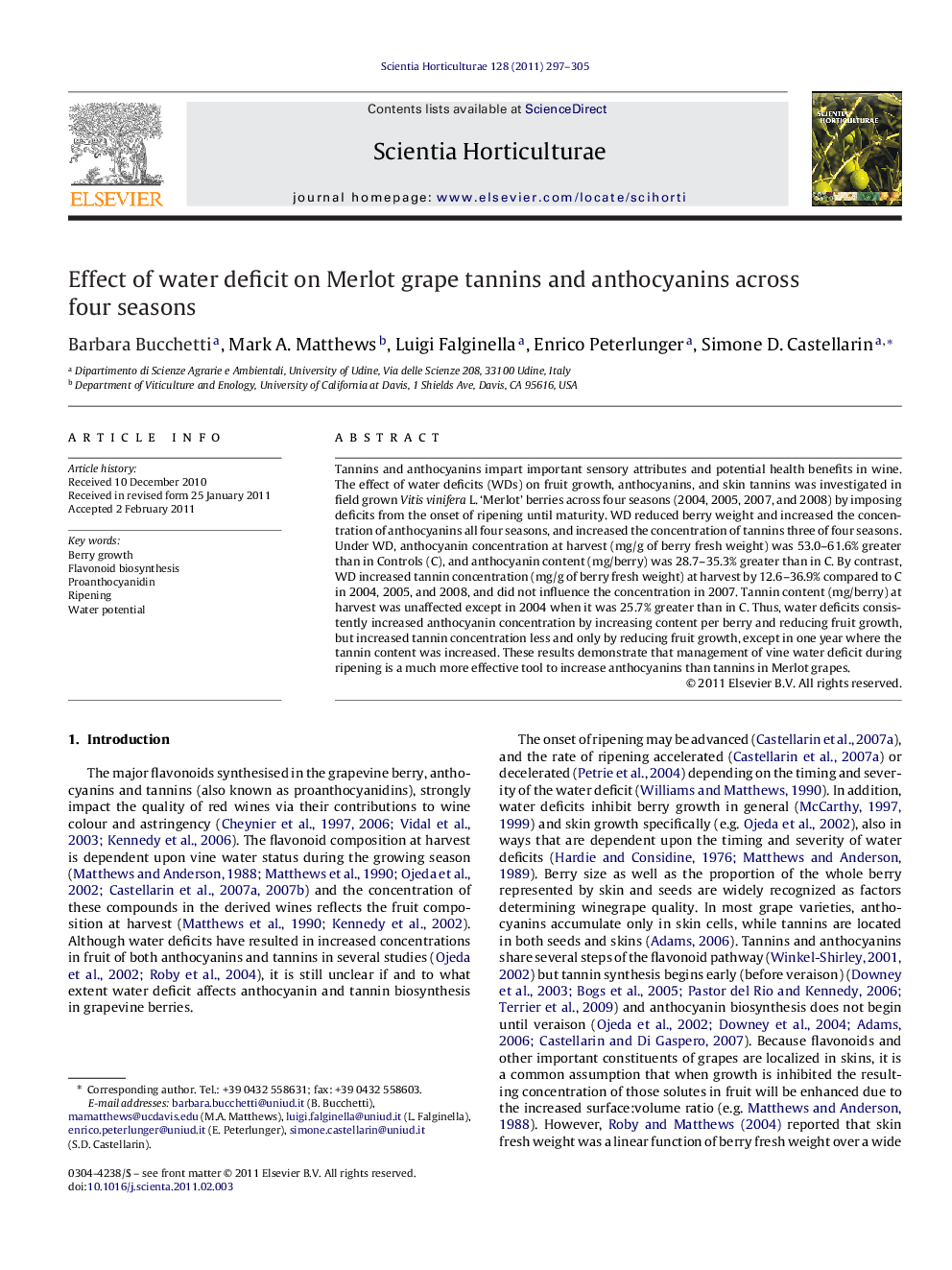| Article ID | Journal | Published Year | Pages | File Type |
|---|---|---|---|---|
| 4568288 | Scientia Horticulturae | 2011 | 9 Pages |
Tannins and anthocyanins impart important sensory attributes and potential health benefits in wine. The effect of water deficits (WDs) on fruit growth, anthocyanins, and skin tannins was investigated in field grown Vitis vinifera L. ‘Merlot’ berries across four seasons (2004, 2005, 2007, and 2008) by imposing deficits from the onset of ripening until maturity. WD reduced berry weight and increased the concentration of anthocyanins all four seasons, and increased the concentration of tannins three of four seasons. Under WD, anthocyanin concentration at harvest (mg/g of berry fresh weight) was 53.0–61.6% greater than in Controls (C), and anthocyanin content (mg/berry) was 28.7–35.3% greater than in C. By contrast, WD increased tannin concentration (mg/g of berry fresh weight) at harvest by 12.6–36.9% compared to C in 2004, 2005, and 2008, and did not influence the concentration in 2007. Tannin content (mg/berry) at harvest was unaffected except in 2004 when it was 25.7% greater than in C. Thus, water deficits consistently increased anthocyanin concentration by increasing content per berry and reducing fruit growth, but increased tannin concentration less and only by reducing fruit growth, except in one year where the tannin content was increased. These results demonstrate that management of vine water deficit during ripening is a much more effective tool to increase anthocyanins than tannins in Merlot grapes.
Research highlights► The effect of water deficit on Merlot grapes was investigated across four seasons. ► Water deficit applied during fruit ripening inhibited fruit growth. ► Water deficit increased anthocyanin content and concentration in the berry. ► Water deficit increased skin tannin content only one out of four seasons. ► Water deficit increased skin tannin concentration in three out of four seasons.
